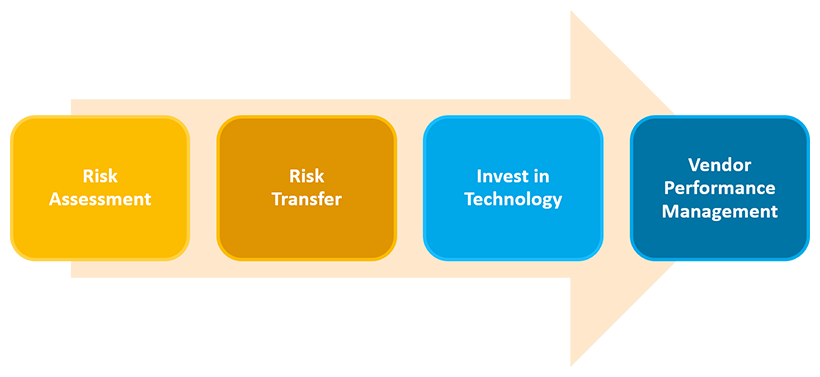Blueprints for Supplier Risk Management
By Sanjay Puri, CEO, C1 Global

Large enterprises deal with numerous suppliers in today’s business world. A lot of companies engage and depend upon these suppliers for manufacturing products and their development or rely on them for running critical business operations. It is said that a direct relationship exists between supplier performance and the company’s overall performance. Any failure from the supplier’s end can result in hampering a business’s overall performance and tarnish its reputation. This is the reason why it is so important to have a robust supplier risk management strategy.
Supplier risk management is deemed to have the greatest impact/potential to disrupt top revenue drivers. The risks are greater in terms of value chains and their effects can last longer than expected. As we witnessed and experienced supply chain issues post COVID-19. It highlighted the inadequacies of several businesses around the globe regarding their supply chain. Some factors are always beyond our control but having a contingency plan always helps in minimizing the effects of a problem. The way to even build a contingency plan comes through the right strategy in place. Supplier risk management is a necessity for every business that deals with suppliers in this globally connected world.
Let’s explore the blueprints for managing risks related to suppliers and keep a check on ongoing activities –

- Risk Assessment – First and foremost step is assessing various risks. Evaluating and listing down all the possible supplier risks that can potentially hamper a business over time. Companies are supposed to maintain a comprehensive file outlaying all the possible risks and their impacts along with their magnitude. This outlay helps a business to identify threats and weaknesses existing in their value chains. A deep analysis must include all the possible worst-case scenarios and how extensively they can impact a business (roughly calculated assumptions). Monitoring would help in providing timely actions against any issue. Some methods to identify various red flags within the supply chain are risk probability score, risk registers, and risk scores.
- Risk Transfer – Another important step is to consider various supplier risks and mitigating them. Contract management is an important aspect of pre-defining the various risks and transferring them onto suppliers. Transferring the liability is important for every business to safeguard them from any catastrophic business losses. Insurance policies are another way of mitigating risks. All this in total helps a business to increasingly put pressure on suppliers to maintain quality and standards of deliverables without any failure.
- Invest in Technology – In today’s business world, automation is an important step, and using technology is increasingly becoming necessary for maintaining the smooth functioning of businesses. With the infusion of technology, a business can critically assess suppliers, partners, processes, and risks associated with them. Investing in technology helps in the long run as well as in the short run. It can identify various red flags based on analytics and help the organization to immune itself from such issues. It helps in laying out strategic plans and improved contingency plans. Through automation, companies will benefit on various fronts, such as improved transparency, increased visibility, formulating action plans, organizing data, deriving actionable insights, managing suppliers, and their activities.
- Vendor performance management – As we discussed in our last blog, it is crucial to assess supplier performance throughout the process until the deliverables are met. Continuous monitoring of each supplier is required for supplier risk management. It starts with creating a strategy for selection criteria, defining KRA’s, data governance, regular checks, adherence to contractual guidelines, contingency plans, etc. It is important to measure and evaluate supplier performance to reduce maverick spending, increase process efficiency, and improve business performance. Evaluation helps in leveraging new actionable insights. It is critical to evaluate for preventing product issues, improving deliverables, payments, and most importantly to drive improvements in the value chain. Overall managing supplier performance extensively helps in reducing supplier-related risks.
Managing supplier-related risks and adhering to these criteria can help you safeguard your business in times of uncertainties. Therefore risk management is extremely vital to maintain sustainability and induce business growth.
In our upcoming blog of the series, we’ll be publishing about the strategies and best practices to improve supplier management, so stay tuned to learn more.
